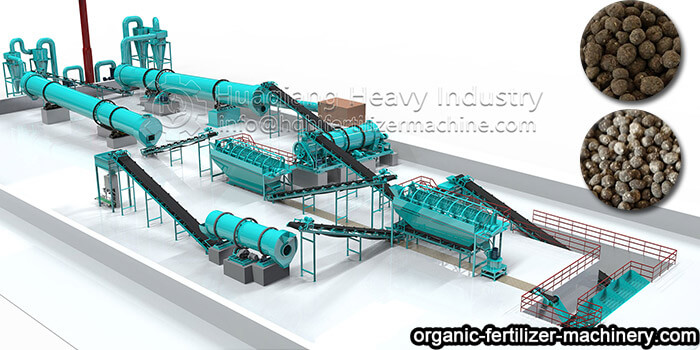The sugar residue of industrial treatment is the high-quality raw material of organic fertilizer. These waste materials are mixed with chicken manure, microbial fermentation bacteria, etc., and processed by fertilizer manufacturing process, which is a high-quality organic fertilizer product on the market.
1. Sugar residue organic fertilizer can produce a variety of enzymes, inhibiting multiple soil-borne diseases such as double rickets, root knot nematode disease, wilt disease, bacterial wilt and disease.
2. The high-efficient and beneficial microbial flora contained in the fertilizer keeps on active, which can activate nitrogen in the air, decompose and release insoluble phosphorus and potassium nutrients. Supplement soil organic matter and release nutrients needed for crop growth slowly.
3. Fertilizer can improve soil physical properties, keep the soil soft and easy to cultivate, promote soil aggregate structure, increase soil pores and promote root group growth. Increase soil water and fertilizer holding capacity and reduce leaching loss.
1. Fermentation. The fermentation of sugar residue raw material compost is carried out, and the material is processed by the trough type compost turner or the windrow compost turner.
2. Crush. The half wet material crusher smashes the compost after fermentation, so that the raw material is easy to granulate.
3.Batching. According to the raw material design of multiple feed bins, the batching system will mix different raw materials together.
4. Stir. We provide vertical mixer, horizontal mixer, double shaft mixer, etc., which can mix all materials together.
5. Granulation. For organic fertilizer granulation, disc granulator, new type organic fertilizer granulator, ball shaping machine, drum granulator, flat die pelleting machine, etc. can be selected. According to the characteristics of raw materials, select the appropriate granulator.
6. Dry and cool. The particles made of particles usually have large moisture content and can not be directly packed, so they need to be dried. After drying by the fertilizer rotary drum dryer, the particle temperature is too high to agglomerate. Therefore, we need to use a drum cooler to cool the fertilizer. After cooling, fertilizer particles are easy to package, store and transport.
7. Screening.
8. Packaging: The fertilizer packing machine can realize automatic weighing and complete the packaging according to the setting.
